To water or not to water: that is the question. Indoor plants can be finicky when it comes to watering and many new houseplant owners have difficulty in maintaining a good watering regime. From the types of water to use to watering methods, this guide covers everything you need to know about watering houseplants.
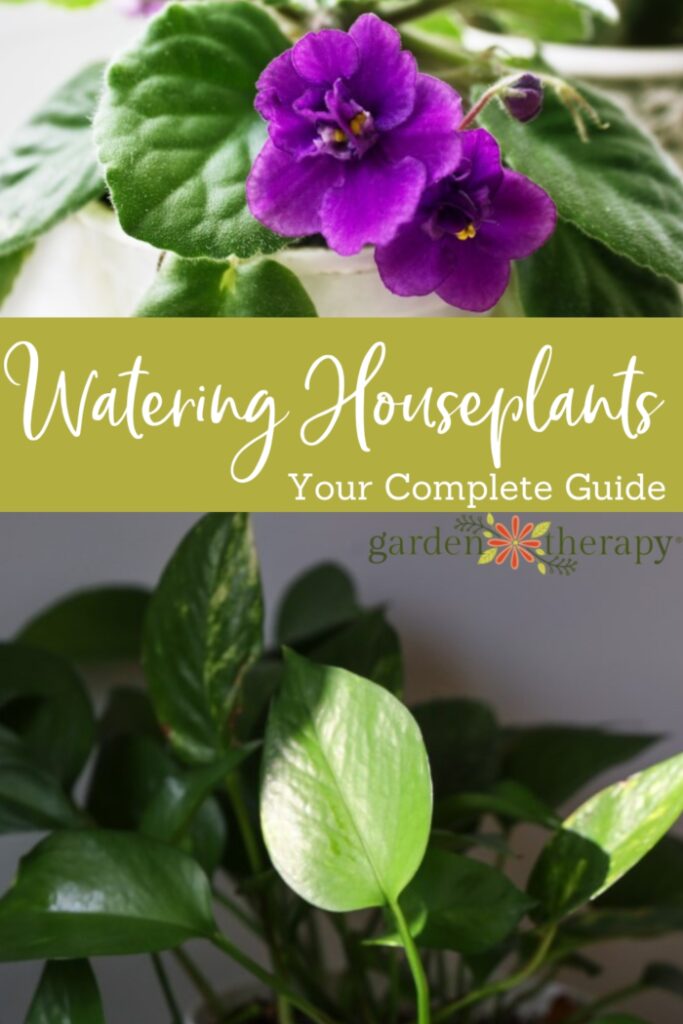
Have you ever walked by a plant, spotted the droopy leaves, and gotten an immediate sense of guilt? Whether I’m on my way out or tucking in for the night, I always am quick to grab a watering can, give the plant a good soak, and whisper a quick sorry.
Luckily, our plants are often forgiving when it comes to watering. Slowly we learn our plant’s specific needs. Eventually, we can know when they need more water even before they do.
Over the years, houseplant gardening as changed a lot and has exploded in popularity. There is so much conflicting information on places like Pinterest, Instagram, and TikTok. For the best information possible, I really recommend these books as a great resource for houseplant gardening. And of course, you can also find more information in my other articles on indoor gardening.
Today, I want to show you some tricks about:
- how to know when your plant needs water
- different methods for watering houseplants
- the types of water your plants will love
- how to look out for the signs of underwatering and overwatering
Let’s hydrate!
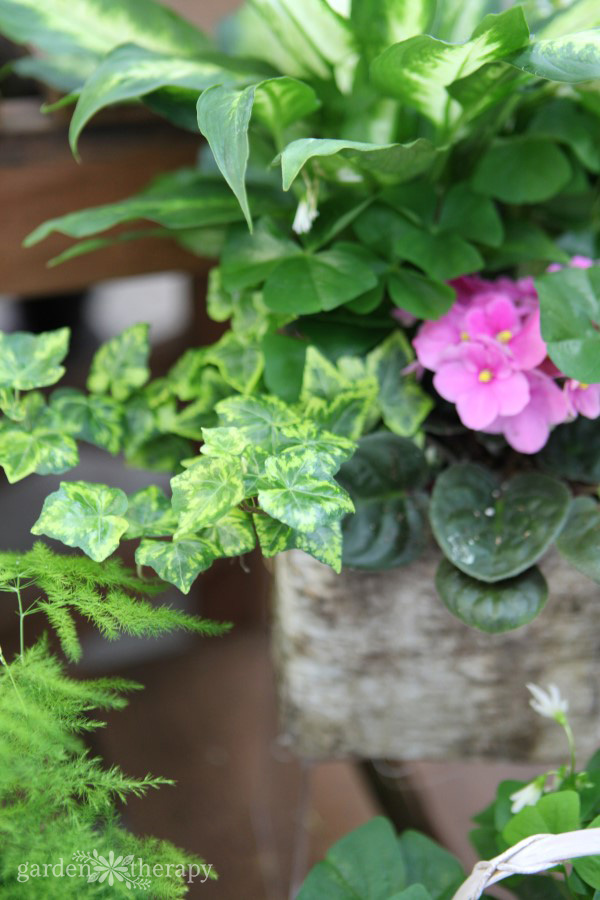
How to Tell if Your Houseplants Need Water
Our plant friends are very good at letting us know when they need water. Plant leaves are quick to get droopy, yellow, crisp, and eventually fall off when they need water. Succulents may be the exception to the rule, as their leaves aren’t as easy to wilt.
The best way to test your plant’s moisture is by touching the soil. If the soil is still moist or damp at all, leave it! Plants like to fully dry out between waterings to give their roots a chance to breathe.
So, how often should you be watering houseplants? While the rules may seems simple (i.e. water this plant twice a week and that plant once a week, etc), the reality is we can’t really say.
Instead, I suggest not having a regiment. Simply water your plants whenever they need it! You can tell this easily by picking up the plants and seeing if they are light (water makes them heavy) and also by testing the soil with your finger.
It’s important to know that plants’ needs will adjust seasonally. Throughout the year, your plants will require different watering schedules. In the summer, you will have to water your indoor plants much more frequently than you will in the winter.
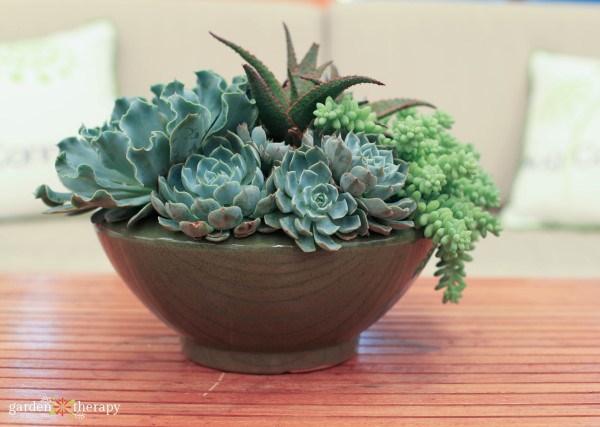
How to Water Your Houseplants
Imagine you’ve had a long day out in the sun without a water bottle. What’s the first thing you do when you get home? Glug a ton of water down!
Your plants feel the exact same way. It is good to give them a thorough soaking whenever you water them.
Give Your Plants a Bath
If possible, I like to bring my plants into the bathtub or sink and water them directly in there. I let the water soak through once, and then give it another good soaking to ensure the soil absorbs as much as possible.

Ensure There is Proper Drainage
Drainage holes are a MUST when it comes to your indoor plants. Pooling water can cause root rot and unhappy plants if the water can’t escape. For plants that you can’t bring to the sink, water thoroughly with a water can until you see water in the saucer. Leave it for ten minutes and then dump out the saucer water.
Choose Terracotta Pots
Terracotta pots are great at absorbing moisture. When watering houseplants in terracotta pots, let the water sink in for a couple of minutes and then just tip the plant slightly over and carefully dump out the remaining water.
Avoid Watering (Some) Leaves
Some plants don’t like to get their leaves wet, such as African violets or succulents. As a general rule, avoid getting water on any furry, soft foliage. Also water in the mornings so the water has time to evaporate off the leaves during the day.
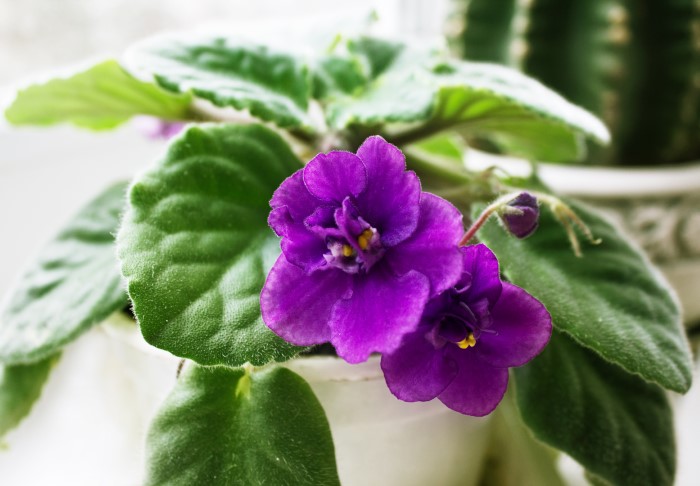
Research the Plant’s Watering Needs
All plants are a little different when it comes to watering. For example, ferns love wet leaves and air plants enjoy misting. Always research your plant’s specific care needs.
Cacti and succulents are always killed from overwatering. Test the soil before every water and ensure they are bone dry before watering again. They must (must!) have drainage holes.
How to Water Big Plants
Big plants are big drinkers. Since you can’t water them in the sink or tub, you will want to have a large saucer sitting under your larger-sized plants.
Use a pen or chopstick to poke holes throughout the soil about 3 inches deep. This will help the water to get far enough down. Don’t poke too many holes or you can damage the root system!
I also suggest using a watering can with a narrow spout. This helps to get through foliage and water directly on the soil.

Try Self-Watering
If one of your plants needs lots and lots of water, you may want to consider investing or making some self-watering planters. This ensures they are getting enough water even if you forget or go away on vacation.
For thirsty plants, you can also add a layer of pebbles on top of the soil to help retain moisture for longer periods of time.
Easy DIY Self-Watering Pot Hack
Create a self-watering planter by placing a nursery pot inside a indoor plant pot without drainage. Make sure that the nursery pot doesn’t sit right on the bottom so that there is a small reservoir for water to drain and collect. The roots will grow down and collect the water as they need it, but the soil will not be left sitting in water. The nursery pot may fit in so that it naturally hovers above the bottom of the decorative pot, or you can use wood blocks or stones to raise it up.
Water with a Saucer
Some plants really love this method! Fill the saucer or tray with water and let the roots and soil suck it up on their own. Keep refilling it until the water is no longer absorbed. However, don’t let the roots sit in the water. After they are done soaking it up, dump the remaining water.
This watering method works for plants that don’t like getting their stems wet, such as cacti, succulents, and African violets.
Types of Water to Use for Houseplants
From well water to rainwater, believe me when I say the type of water for watering houseplants can make a huge difference. Softened tap water can have too many salts in it that build up in the soil over time. Meanwhile, rainwater could have some extra nitrates hiding inside it.
If you don’t have rainwater on hand, don’t worry. Filtration systems are great for plants. Another great method is to fill up your watering can for next time directly after watering your plants. After sitting out for 24 hours, the water dechlorinates and becomes room temperature…plants’ water of choice!
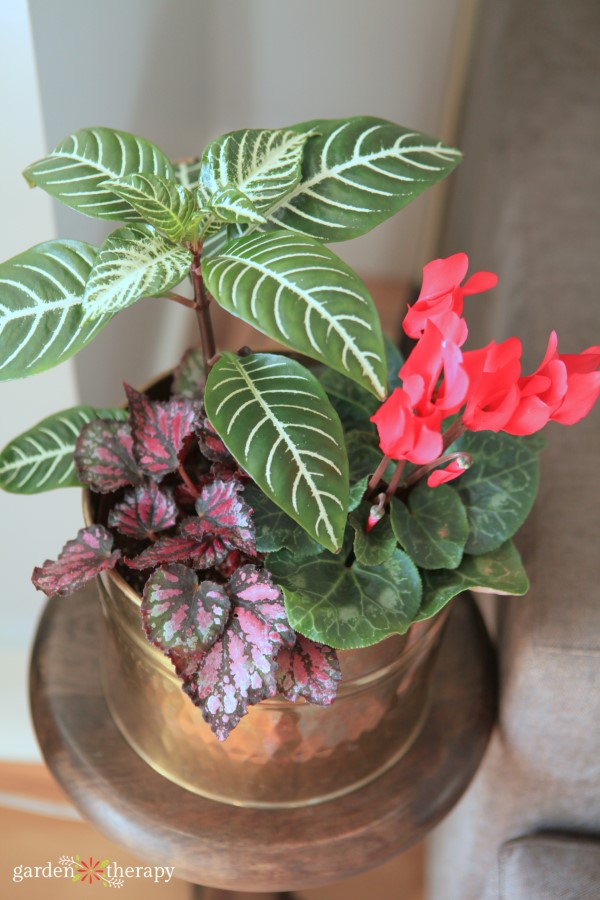
Signs of Overwatering Houseplants
More often than not, people are giving their plants too much attention! Overwatering is very common with indoor plants but can easily be fixed by adjusting your watering schedule.
First things first, you will want to look at how your plant is behaving. Brown leaves that feel soft and limp, yellowing leaves, stunted growth during their peak growing period, blisters or lesions on the plant, and wilting are all signs of overwatering. However, some of these things can also be a sign of underwatering too! So next we need to check the soil.
If your soil is still wet and your plant is in distress, overwatering is likely the culprit. You can test your moisture levels by simply sticking your finger in the soil or even by lifting the pot and seeing if it is still heavy with water.
Roots need oxygen to survive, otherwise, they will rot and die. Even if your plant has excellent drainage, keeping your soil constantly wet doesn’t allow enough air to reach the roots. Root rot from too much water looks like slimy, grey, or brown roots.
Beyond soil and the plant, you may also notice pests and an odor from your plant. A lot of pests, like gnats, thrive in damp places. Bacteria and fungi also grow in the moisture, making your plant give off an unpleasant odor. Root rot also can get stinky!
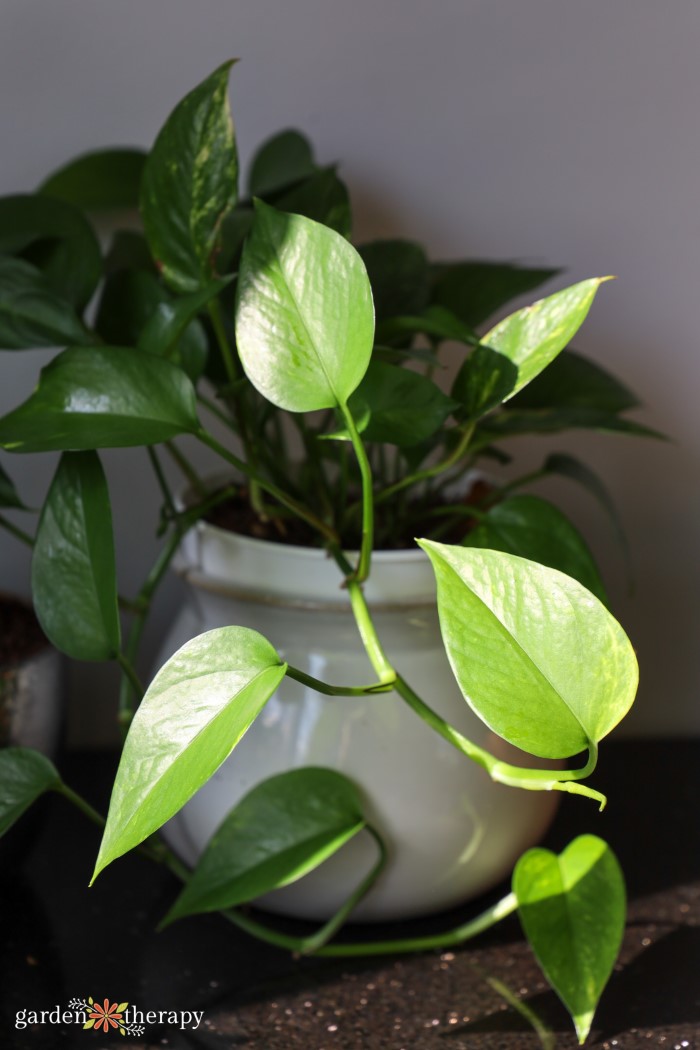
Signs of Underwatering Houseplants
Plants can get pretty thirsty too. Some of the signs of overwatering and underwatering are similar, which means it can get confusing. Plants that have discoloured leaves, slow growth, and are wilting could be underwatered. Brown leaves where the leaves feels dry and crispy (as opposed to soft and limp), also mean underwatering.
If your plant is showing one of these signs of distress and you’re not sure whether it is under or over watered, turn to the soil. If the soil is completely dry and even pulling away from the edge of the pot, it is underwatered.
Some plants may dry out very quickly, despite frequent watering. This may mean it requires a bigger pot in order to support more water and hold more moisture longer.
With a little know-how, your plants will now be able to thrive!



